With over 1,000 dog breeds spread around the world, we know we have some breeds new to you on this list of dog breeds that start with B. You probably know the Borzoi, Basset Hound and Bloodhound–but how about the Bosnian Coarse-haired Hound? Or the Banjara Hound?
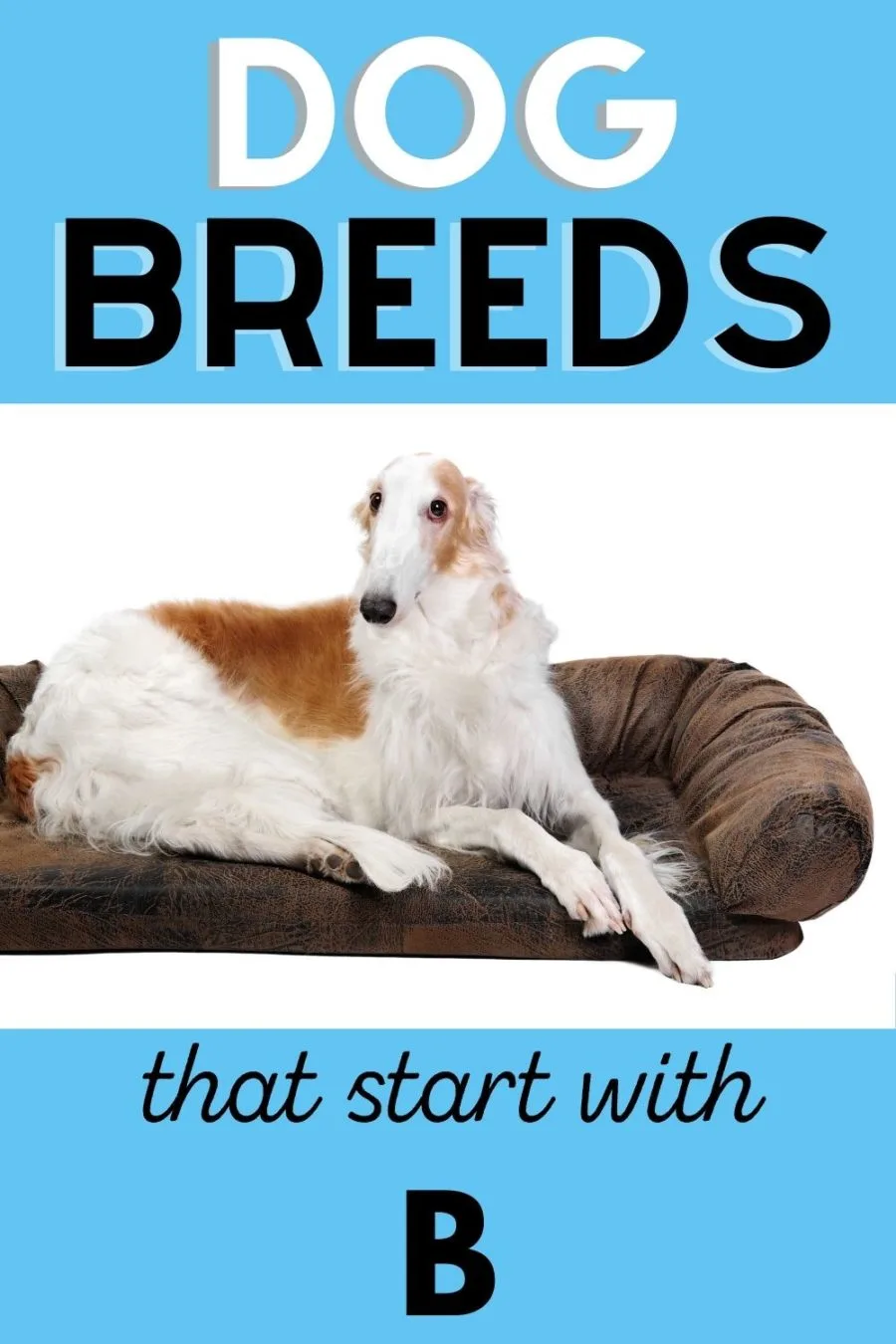
This list features purebred dogs starting with B; for crossbreeds starting with B, see our crossbreed dog breeds list! Discover more dog breeds from A-Z with the links at the bottom of this page, too.

Bakharwal Dog
On the edge of extinction, this ancient breed of working dog (which lives on a vegetarian diet) has inhabited the mountainous ranges of India alongside two nomadic tribes– the Gujjar and the people from whom the dog received its name, the Bakharwal.
Adept at guarding both livestock and people, it is the breed’s instinct to protect those around them that is leading the breed to its end, as militant separatists shoot the dogs to prevent them from alerting the tribe of those who encroach upon their territory.
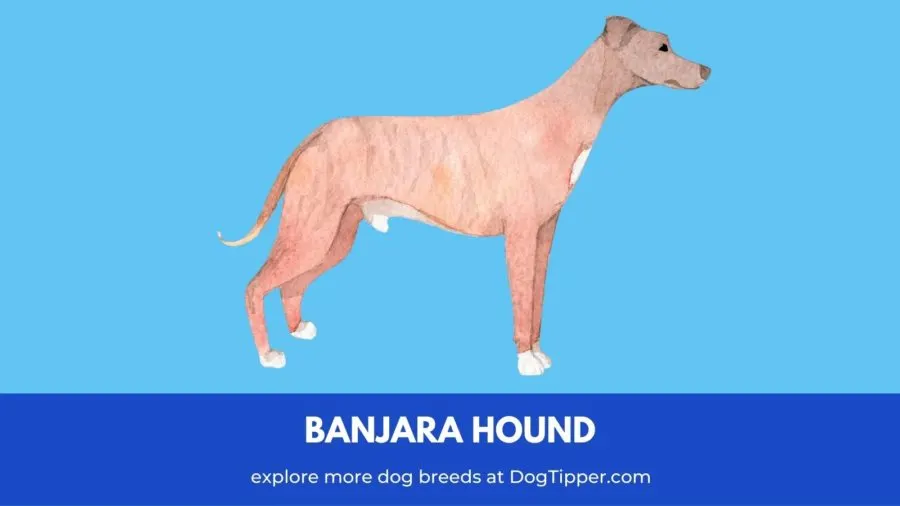
Banjara Hound
Named after the Banjara people with whom they live, this rare sighthound from India is a protector of both flocks and people.
Also called the Vanjari Hound, this breed is known for its speed, which rivals that of a Greyhound, as well as its endurance, which equals the Collie.
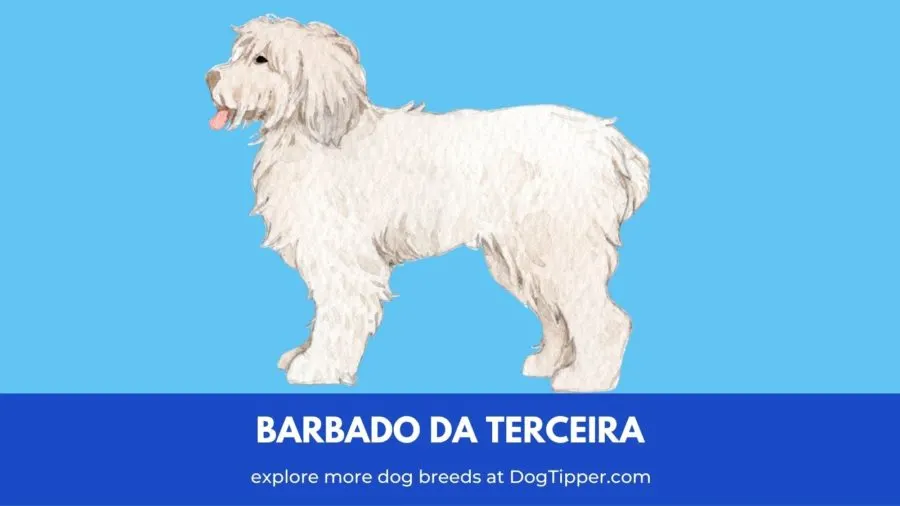
Barbado da Terceira
A pooch from Portugal, the Barbado da Terceira received its name from the island of Terceira (the Portuguese word for “third”), where the breed herds cattle.
The dogs’ distinctive shaggy mane includes a “beard,” which served as inspiration for the first portion of the breed’s moniker (with “barbado” meaning “beard” in Portuguese).

Barbet
Francophiles might know the phrase “boueux comme un barbet.” which translates as “muddy as a Barbet,” a nod to the shaggy water dog’s affinity for playing in puddles.
Pronounced Bar-bay, this sporting breed (whose DNA includes Bichon Frise, Briard, Poodle and Newfoundland) has helped French hunters since the 16th century, but in recent years the Barbet’s resume has expanded to include dock diving dog, agility dog and therapy dog.
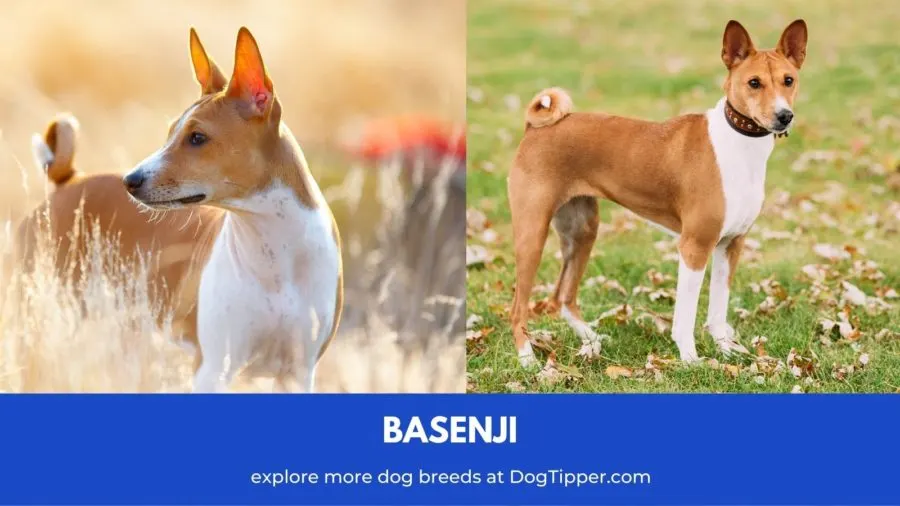
Basenji
The Basenji may be known as “the barkless dog” but the breed certainly has something to crow about, as these cat-like African canines could be the world’s oldest dog breed!
Once given as gifts to Egyptian pharaohs, for centuries the breed aided African tribesmen as they hunted for game.
A dog with multiple monikers, the Basenji is also known as the African Bush dog, the African barkless dog, the Ango Angari, the Congo dog and the Zande dog.
Although the breed is not a well known breed in the United States, bibliophiles may remember having their heart strings tugged by the tale of a Basenji in the James Street novel Goodbye, My Lady. The popularity of the story led to a 1956 film of the same name, which featured in the title role a six-month-old Basenji puppy named My Lady of the Congo in a nod to the breed’s country of origin.
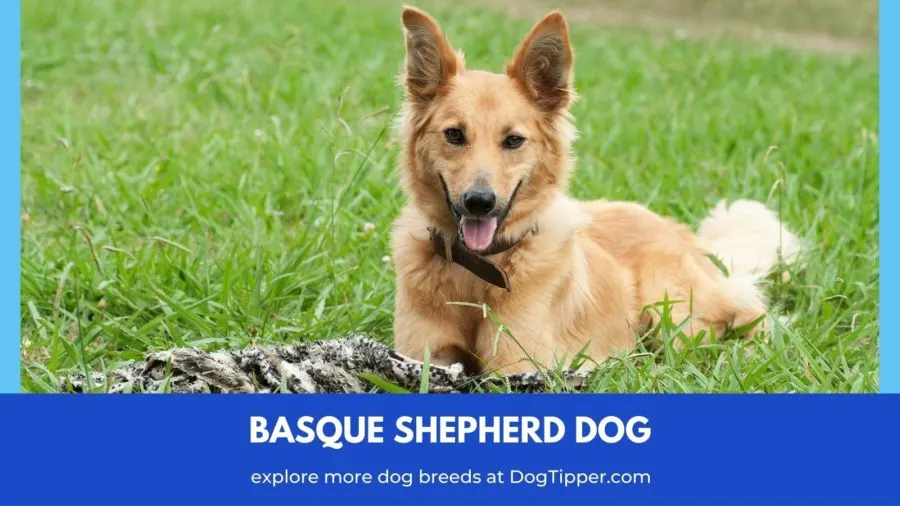
Basque Shepherd Dog
Central in the lives of the Basque people since the turn of the sixteenth century, the beauty of this breed was captured on canvas by Rococo painter Luis Paret y Alcazar and Impressionist Adolpho Guiard, as well as artists whose names have been lost in the midst of time, although their monastery frescoes, complete with depictions of the Basque shepherd dog, remain.
Also known as the Euskal Artzain Txakurra, the Spanish sheepdog has two forms: the smooth-coated Gorbeiakoa and the coarse coat of the Iletsua.
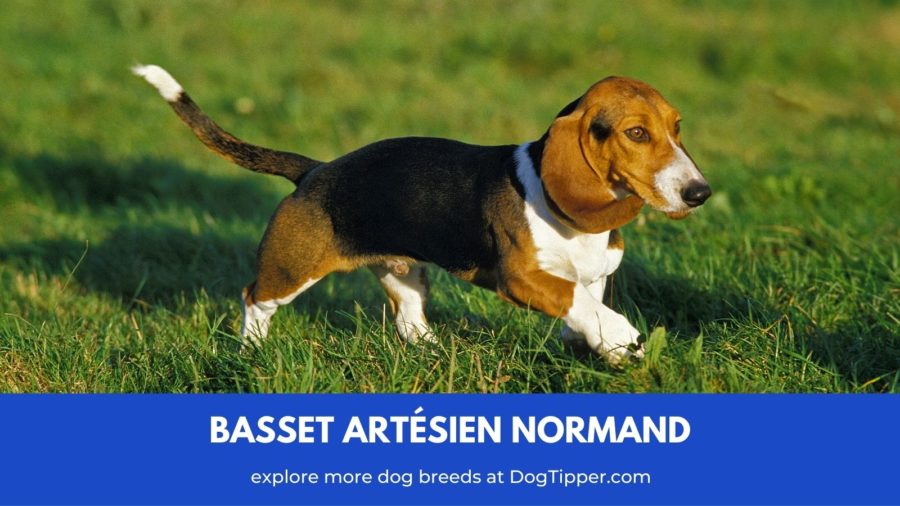
Basset Artésien Normand
Although their stubby legs kept them low to the ground, this rare French hound was once held in high esteem by hunters stalking small game.
Known by a multitude of names, including the Artésian Basset Hound, the Basset Normand, the Normand and by its initials (BAN), this breed is lighter-boned than that of the Basset Hound.
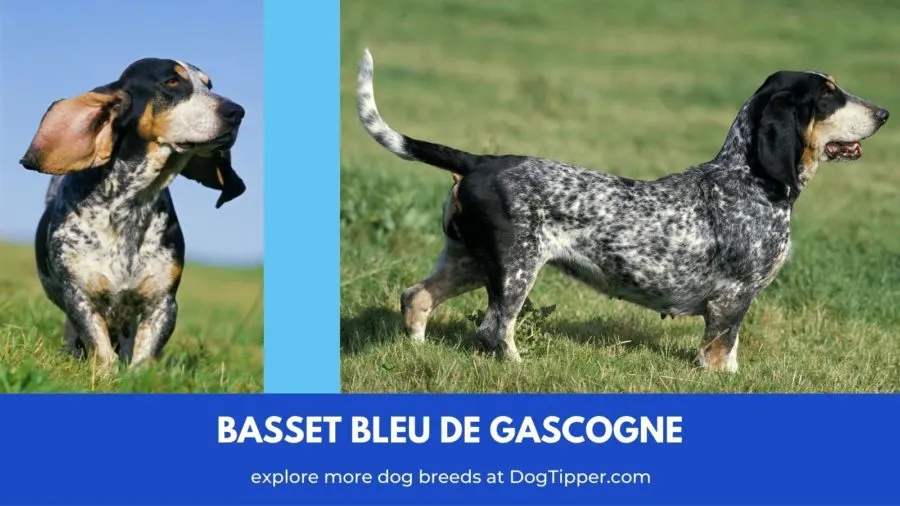
Basset Bleu de Gascogne
The short legs of this hound dog have scoured the French countryside alongside hunters since the Middle Ages in search of small game.
Although the breed was on the brink of extinction in the 19th century, the population of the Bleus de Gascogne rebounded in its native country. Still, sightings of this breed (which is the diminutive of the Grand Bleu de Gascogne) outside of France are rare.
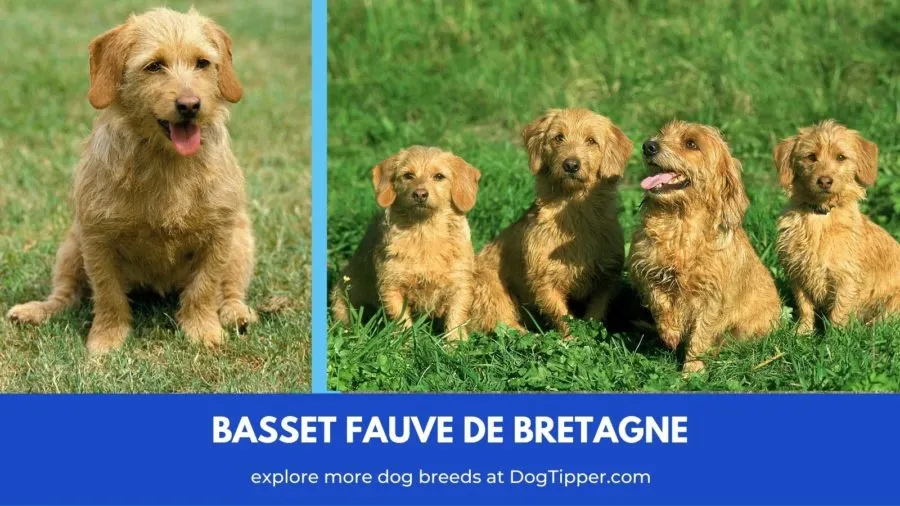
Basset Fauve de Bretagne
The world lost the Grand Fauve de Bretagne, the forebearer of this breed, in the 19th century, but happily this small scent hound is enjoying popularity in its native France. Also known as the Fawn Brittany Basset, this breed– along with its extinct ancestor and the Griffon Fauve de Bretagne– are the only three hounds with the Brittany region as its birthplace.
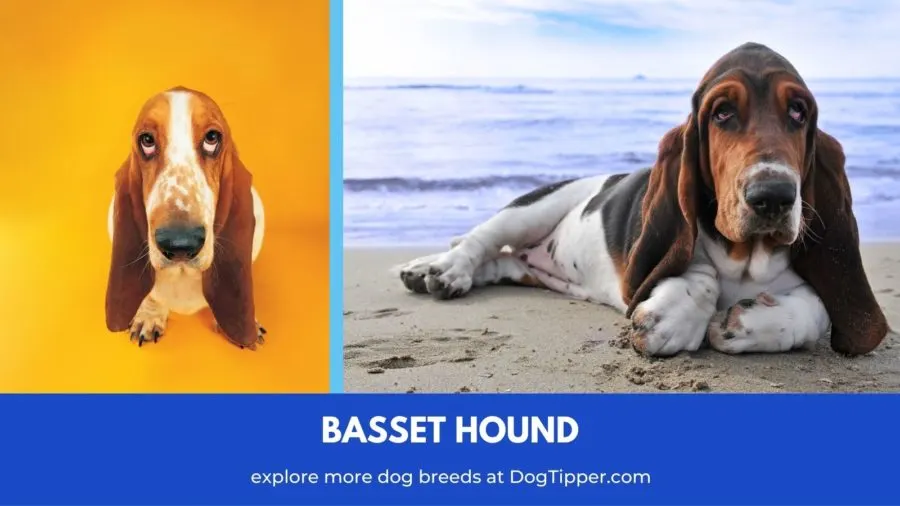
Basset Hound
When it comes to mastery of the olfactory system, the Bloodhound wins by a nose, with this scent hound– possessing 220 million scent receptors–close behind.
Descendants of the St. Hubert’s Hound, this French breed was so admired by Napoleon III that bronze likenesses of his canine companions were displayed at the Paris Salon.
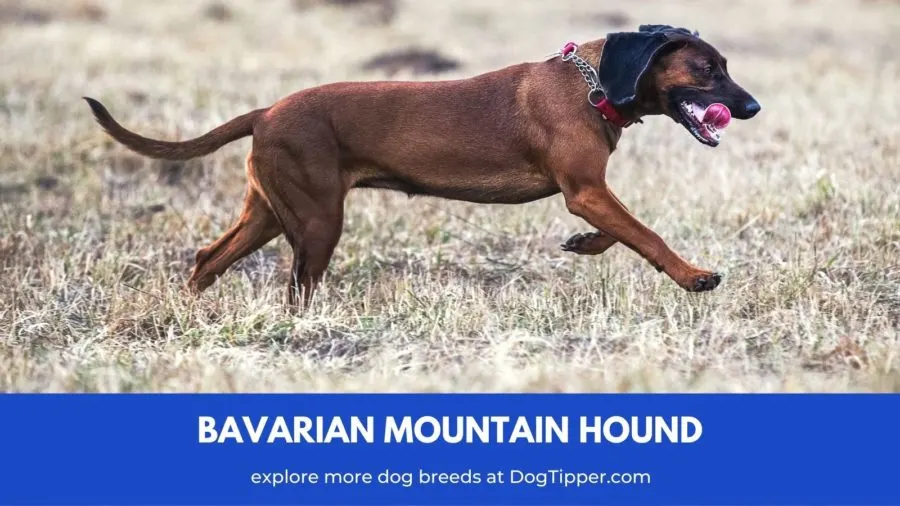
Bavarian Mountain Hound
A German scent hound who has helped hunters since the late 1800s track injured game, the Bavarian Mountain Hound has the blood of both the Hanoverian Scenthound and the Red Mountain Scenthound in its veins.
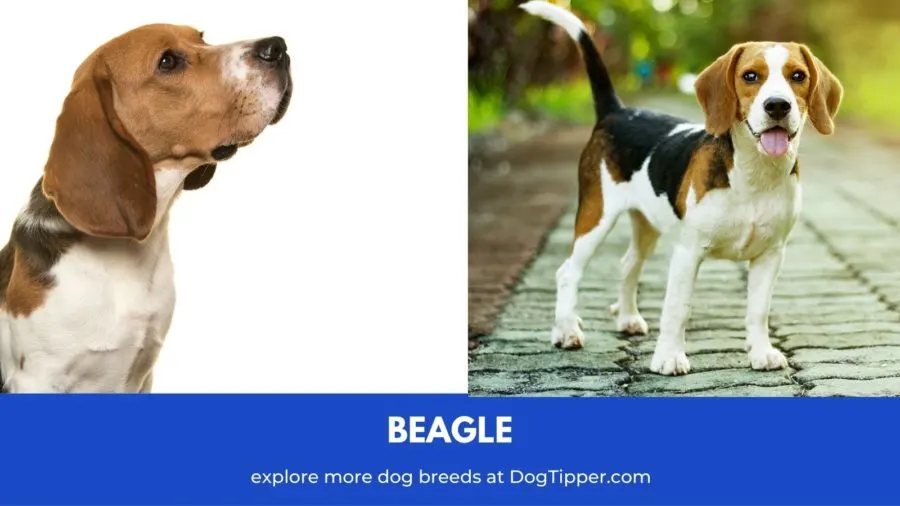
Beagle
Referred to as the Goldilocks of dogs thanks to a sweet demeanor and mid-range frame which makes the breed ‘”just right,” this popular scenthound originated in England. While the breed’s beginning are shrouded in mystery, variations of today’s beagle were around as early as the 11th century.

Beagle-Harrier
As their name implies, this scenthound is the result of pairing the Beagle and the Harrier.
A French breed, the Beagle-Harrier originated in the 19th century. Although the Beagle-Harrier traveled to the United States in mid-1800s, today this rare breed is seldom seen in America or the country of its origin.

Belgian Shepherd
Although best known as a herding dog, this breed’s resume has expanded over the years to include guide dog, military dog, police dog and search and rescue dog.
There are several varieties of this breed: the Malinois, the Tervuren, the Groenendael and the Laekenois. (It is worth noting that these dogs are considered separate breeds by the American Kennel Club).
Among the brave Belgian Shepherds of the Malinois variety who have made their mark in history are Cairo, who helped to track down Osama bin Laden, and Conan, who helped the US Army bring an end to Abu Bakr al-Baghdadi.
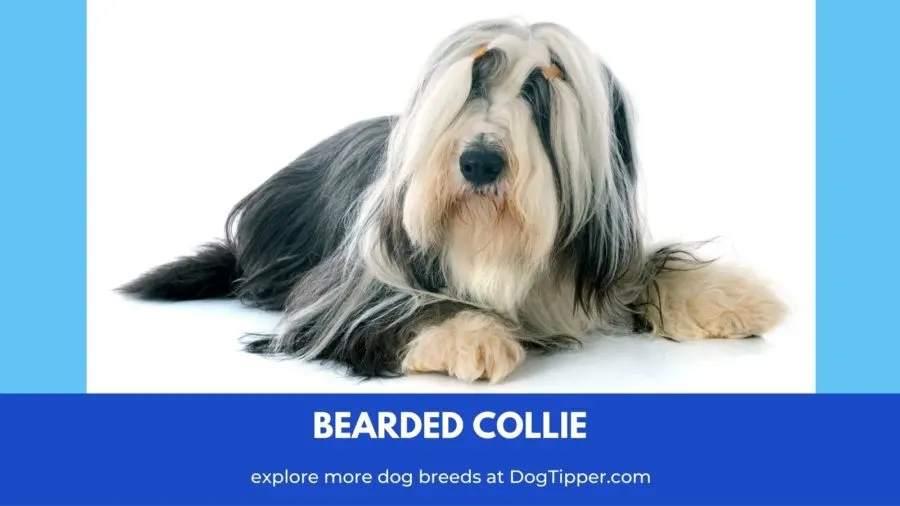
Bearded Collie
A herding dog with Scottish roots, this breed began roaming the Highlands as early as the 1500s. Immortalized on canvas by the 18th century artists Gainsborough and Reynolds, the “beardie” (which is also referred to as the Highland Collie, the Mountain Collie and the Hairy Mou’ed Collie) has also gained fame on the big screen in the 2006 version of The Shaggy Dog.
Beauceron
Although best known for shepherding skills, this breed can boast of an expansive resume which includes work as a soldier, guard dog, rescuer and in more recent years, actor. (Film buffs can watch the acting chops of Beaucerons in Hotel for Dogs, Marmaduke, Moonraker and Nikita.)
Originating in France in the Middle Ages, the double dew clawed dog– who may also be referred to as the Berger de Beauce, the Beauce Sheep Dog and the Bas Rouge— is one of the breeds that contributed to the DNA of the Doberman Pinscher.
Bedlington Terrier
Originally referred to as gypsy dogs, the Rothbury Terrier or the Rodbery Terrier, since 1825 this breed has carried the name of the town in North East England that witnessed its beginning.
A lamb-like dog developed to hunt badger and otter, over time the Bedlington Terrier– which shares DNA with the Dandie Dinmont Terrier, the Otterhound and the Whippet– has become more recognized for its pursuit of prizes in the worlds of dog sports and dog shows. (The precisely clipped coiffure of a Bedlinton Terrier named Rock Ridge Night Rocket helped the breed take the top spot at the Westminster Kennel Club Dog Show in 1948.)
Bergamasco Shepherd
Beneath drooping dreadlocks, long eyelashes protect the eyes of this herding dog, which have been guarding sheep and cattle in the Italian countryside for centuries.
Other names for this breed include the Bergamasco Sheepdog and the Cane da Pastore Bergamasco.
Berger Picard
Two world wars almost meant the end for this breed, and even today sightings of the French herding dog remain rare.
The Berger Picard shares DNA with the German Shepherd, the Bergamasco Shepherd, the Cane Paratore, the Lupino del Gigante, the Pastore d’Oropa and the Pastora della Lessinia e del Lagoai.
Bernese Mountain Dog
Originating in Switzerland, members of this breed were once work horses, using their strength to pull carts, drive herds of cattle, and protect both property and people.
Bichon Frisé
A breed whose cuteness captured the hearts of such celebrities as Doris Day, Susan Sarandon and Kristin Chenoweth (and captured the title of Best in Show at the 2001 Westminster Kennel Club Dog Show, thanks to a pup named J.R.), the Bichon Frise originated in the Canary Islands.
While working as sailing and herding dogs in Spain, it was the French who transformed the tiny tail-waggers into today’s pampered pooches.
Billy
Also known as the Poitou Hound, both names belonging to this breed are tributes to the dog’s origin, the Chateau de Billy (home to the breed’s founder) in Poitou, France.
A rare breed which originated in the 19th century, the Billy shares DNA with the now extinct breeds the Ceris, the Larrye and the Montemboeuf with the Poitevin.
Black and Tan Coonhound
Developed to hunt raccoon, this US-born breed is the result of pairing of the Bloodhound with the Black and Tan Virginia Foxhound and the now extinct Talbot Hound.
Pet parents of a Black and Tan Coonhound share a bond with America’s first president! George Washington displayed his love of liquor by giving his four-legged hunting buddies the booze-inspired monikers Drunkard, Taster, Tippler and Tipsy.
Black Norwegian Elkhound
Although a rare sight in other parts of the world, this hunting dog has been a fixture in Scandinavian countries since the 18th century.
Also known as the Black Elkhound and the Norwegian Moose Dog, this breed should not be confused with the Norwegian Elkhound, an ancient breed that has been immortalized in Norse mythology.
Black Russian Terrier
Seventeen different breeds played a role in the development of this military/working dog, among them the Rottweiler, the Newfoundland, the Airedale Terrier and the Giant Schnauzer.
Created in the 1930 to aid the Russian army, two decades later the breed had become primarily a four-legged family member. The breed is now affectionately referred to as the Black Pearl of Russia.
Black Mouth Cur
Born in the USA, this breed gained immortality through one of the most heart-tugging tales of all time, Old Yeller. Also known as the Southern Cur, the Southern Black Mouth Cur and the Yellow Black Mouth Cur, the hunting dog is believed to have originated in Mississippi.
Bloodhound
A breed that wins by a nose in the olfactory department, the Bloodhound possess more than 300 million scent receptors, with a sense of smell that is 1,000 times stronger than that of a person!
Also known as the St. Hubert Hound and the Chien de St. Hubert thanks to the breed’s ancestors, which were dogs from the Abbey of Saint Hubert in Belgium, the Bloodhound is also referred to as the Sleuth-dog due to the breed’s outstanding tracking ability.
Blue Lacy
Dubbed the official state dog of Texas, this working dog has been a fixture in the Lone Star State since the 1800s, when the breed was developed by brothers Ewin, Frank, Harry and George Lacy. Despite its name, the coat of the Blue Lacy also comes in red as well as tri-color.
Blue Picardy Spaniel
The dawn of the 20th century brought with it this rare French pointing dog, which was developed with the Picardy Spaniel and the English Setter.
Not widely known outside of its native country and Canada, the breed is not born with its “blue” appearance. Puppies are mainly white with intermittent black spots.
Bluetick Coonhound
Although the breed’s birthplace is Louisiana, Tennessee declared its love for the talkative tail-waggers by naming the Bluetick Coonhound the state’s official dog in 2019.
A dog who shares DNA with the Back and Tan Virginia Foxhound, the Grand Bleu de Gascogne, the cur, the American Foxhound and the English Foxhound, this breed can trace its lineage back to George Washington.
The Bluetick Coonhound has gained fame in recent years as several country music stars have sung the breed’s praises in chart-topping singles, and author Fred Gipson waxed poetic about the raccoon-hunting dog in Savage Sam.
Boerboel
Meaning “farmer’s dog,” this South African breed has lived up to its name, working diligently to guard both property and lives of their two-legged family. Originating in the 17th century, these muscular dogs share DNA with the Mastiff, the Bulldog and the Bull Terrier.
Extremely loyal to those they love, the Boerboel can be wary of strangers. The breed is banned in several countries.
Bohemian Shepherd
Once chosen by the King of Bohemia to protect the land of their birth, today this ancient herding breed’s impressive job resume also includes that of service dog, therapy dog and search and rescue dog.
Also known as the Chodsky Pes, the Czech Sheepdog and the Chodenhund, this ancient breed (which originated in the 1300s) is highly intelligent and loving.
Bolognese
A breed whose beauty was captured on canvas by Titian, Goya, Breughel and Watteau, these playful toy dogs have been the canine companions of such prominent pet parents as Madame de Pompadour, Russia’s Catherine the Great and Marilyn Monroe.
Originating from Bologna, Italy, the breed (which is also known as the Bichon Bolognese, is related to the Maltese.
Border Collie
Originally known as the Scotch Sheep Dog, the name Border Collie was derived from the border region between Scotland and England, where the breed originated.
Today’s Border Collie can trace its roots back to a dog dubbed Old Hemp, who was born in late 1893. In honor of the breed’s founding four-legged father, in 2015 a memorial to Old Hemp and his owner Adam Tefler was erected in West Woodburn, Northumberland in England.
Pet parents of a Border Collie share a common thread with such dog-loving royals as Queen Victoria, whose Border Collie “Sharp” was immortalized alongside the sovereign in both paintings and photographs, and Denmark’s Crown Prince Frederik and Princess Mary, who started off married life with a Border Collie called Ziggy, and today share their palace with Grace, a member of the same breed.
Border Terrier
A breed whose lineage leads to the Dandie Dinmont terrier and the Bedlington Terrier, this wiry-coated canine began as a protector of sheep against their foe, the wily fox.
Once known as the Coquetdale Terrier, the Reedwater Terrier and the Ullswater Terrier, the Border Terrier– which originated in England– has a cheerful personality and is well suited to be a member of an active family.
Borzoi
Synonymous with sophistication, this sleek Russian sighthound (whose name means “fast”) originated in the 17th century.
Sharing DNA with Arabian sighthounds, this breed– which is also referred to as Barzoi, Fella and the Russian Hunting Sighthound— once helped in the hunt for wolves, a task which was aided by the dogs’ 270-degree view of their surroundings.
Bosnian Coarse-haired Hound
Answering to a number of names including the Barak Hound, the Bosnian Broken-haired Hound and the Bosnian Rough-haired Hound, this scent hound has tracked down game since the late 1890s. The breed is seldom seen beyond the bounds of Bosnia.
Boston Terrier
Averaging only 16 inches in height, the Boston Terrier may be small in stature, but the breed holds a large place in the heart of those who live in Massachusetts, as the breed became the state’s official dog in 1979.
Nicknamed “the American Gentleman,” the Boston Terrier has been a pal with paws to two Presidents: Warren G. Harding, who was a pet parent to a Boston terrier named hub, and Lyndon Johnson, whose family dogs Fleck and Spot played a part in many childhood memories.
Although the breed only ranks 21st on the American Kennel club’s annual list of the most popular dogs, the Boston Terrier has its own pet holiday (National Boston Terrier Day), which takes place on February 19.
Bouvier des Ardennes
Named in tribute to the Belgian region where the breed began, the fate of these dogs, like so many others, was precarious after the first World War.
Reliance on vehicles to take herds of cattle to market rather than the droving skill of the Bouvier des Ardennes further hastened the breed’s decline. Although its population picked up in the mid 1980s due to the diligence of breeders, this cattle herding dog is still a rarity.
Bouvier des Flandres
Like the Bouvier des Ardennes, war and the arrival of trucks to transport cattle to market almost meant the end of this Belgian herding dog. However, the breed found employment in other occupations, such as police dog and guard dog.
Boxer
The history of this breed’s name is a mystery. While some subscribe to the theory that the dogs obtained their pugilistic moniker thanks to the pooches propensity to stand on their hind legs and “box” with their free front paws, others believe that “boxer” came from the word “baxer,” a now antiquated German spelling of boxer. Still others think that the name derived from Boxl, another moniker for the Bullenbeisser.
Boykin Spaniel
Deemed the official state dog of South Carolina (the place of the breed’s birth), the Boykin was named after the avid sportsman who developed this particular spaniel, L.W. “Whit” Boykin.
Lovingly referred to by the sweet sobriquets Swamp Poodle and Little Brown Dog, the Boykin Spaniel is so popular that the breed has been celebrated every year since 1984 with its own pet holiday, which takes place on September 1st.
The breed has also been honored by sculptor Mary Deas Boykin Wortley (the great great granddaughter of the Boykin spaniel’s originator, L. W. “Whit” Boykin), who created 11 small Boykin Spaniel statues that are hidden throughout the South Carolina city of Camden. Tourists can acquire a brochure filled with clues to guide the curious to the canine statues that make up The Boykin Spaniel Invasion.
Bracco Italiano
The paws of this pointing dog has promenaded the land of its origin since the 4th or 5th century BC, and during the Renaissance the Bracco Italiano gained popularity thanks in part to the breeding efforts of the Medici family.
Although by the 1800s the breed was on the brink of extinction, the dogs — who are also known as the Italian Pointer — bounced back in the 1920s.
Braque d’Auvergn
Also known as the Auvergne Pointer and the Bleu d’Auvergne, this gundog (which is related to the Braque Francais) has been pointing out game for hunters in their native France since the end of the 18th century. Their love of the outdoor life is equaled by their love for their two-legged family members.
Braque de l’Ariège
Also known as the Ariege Pointing Dog, this breed– which alerts hunters to the presence of pheasants and hare– is the end result of pairing the Bracco italiano and Perdiguero de Burgos mixes.
As with so many breeds, the Braque de l’Ariege was in danger of disappearing from the face of the earth during World War II but breeders brought the breed back from the brink in the 1990s.
Braque du Bourbonnais
An ancient French breed that was facing a sad fate in the aftermath of World War II, by the 1970s only mixed breed dogs carrying traits of the original pointer remained. The breed’s population increased with the arrival of the Braque du Bourbonnais in 1988.
Braque Francais
Also known as two separate breeds (the Braque Francais, type Gascogne and the Braque francias, type Pyrennees, according to their region of origin), the progenitor of both similar breeds originated in the 15th century. The two can be distinguished by their size, with the Braque Francais, type Gascogne, at 23 – 27 inches in height towering over the type Pyrenees by approximately four inches.
Petting the pointers can also be a way to determine the exact breed, as the type Gascogne’s coat is thicker.
Braque Saint-Germain
A rare French pointer with roots that trace back to English pointers and the Braque Francais, this breed was developed in the early 1800s thanks to one of King Charles X of France’s canine companions.
Although born to hunt, the Braque Saint-Germain can also be loving members of an active family.
Briard
Also known as the Berger de Brie and the Chien de Berger francais de Plaine, the Briard began as a sheep herder and protector. Today the stylishly shaggy dogs are mainly companion animals. Among the famous faces to have a Briard are Thomas Jefferson and Napoleon.
Briquet Griffon Vendéen
A medium-sized version of the Grand Griffon Vendeen (which stands at approximately 23 1/2 – 26 1/2 inches, as opposed to the smaller Briquet’s 19 – 22 inches), this French-bred dog was developed to help hunters in search of small game.
Facing oblivion following the second World War, thanks to the efforts of a French dog show judge the breed bounced back. Still a relatively rare breed, the Briquet is seldom seem outside of the country of its birth.
Brittany
Named after the French region of the breed’s birth, this gun dog (which, until 1982, was known as the Brittany Spaniel) have been assisting hunters since the mid-1800s.
The first of its breed to be officially recognized was Boy in 1907.
While Boy’s coat was orange and white, recognized Brittany coat colors also include orange roan, white and orange, liver, white and orange, liver and white, liver roan, and white and liver.
There are also two types of Brittany: the French Brittany (which is believed to be better at hunting) and the American Brittany.
Broholmer
A royal who knew that dogs rule, King Frederick VII of Denmark and Countess Danner were devotees of this Danish-bred dog, and even posed for an official portrait with one of their Broholmer canine companions.
Utilized as guard dogs to the Danish elite in the 19th century, the popularity of the dogs plummeted during the Second World War almost to the point of the breed’s demise.
Due to the diligent efforts of dog lovers in the 1970s, the breed (which originated through the pairing of English Mastiffs and dogs from Germany) bounced back in the 1970s.
Bruno Jura Hound
Having a nose that notices even the faintest of animal scents, this scenthound is the prized companion of hunters tracking small game along the border between Switzerland and France.
Also known as the Bruno Jura Laufhund, the ancient breed shares DNA with the St. Hubert Hound.
Brussels Griffon
While Jack Nicholson and Helen Hunt won Oscars for their roles in the 1997 romantic comedy As Good As It Gets, Jill– the tiny Brussels Griffon who portrayed Verdell–won the hearts of film fans!
A toy breed that originated in Belgium, this cuddly combination of Affenpinsher and Belgian street dog started out as a rat catcher, a job they held until the latter half of the 1800s when their cuteness captured the attention of Henrietta Maria, Queen of the Belgians.
Commonly called such nicknames as Griff and Bruss, there are three types of Brussels Griffon: the Griffon Bruxellois, the Belgian Griffon and the Petit Brabacon.
Bucovina Shepherd Dog
Named in honor of the Romanian region where the breed began, this guardian of cattle and sheep has several variations, including the Carpathian Shepherd Dog, the Mioritic, the Romanian Raven Shepherd Dog and the Southeastern European Shepherd.
A sight seldom seen outside of their native country, the breed is often described as a “gentle giant” with a strong bond to their human family that equals their suspicions of strangers.
Bull Arab
Sometimes called the Australian Pig Dog, this hybrid breed from The Land Down Under was developed in 1972 to hunt feral swine.
The dogs’ DNA includes the English Bulldog, Pointer breeds, the Mastiff, the Great Dane and the Greyhound.
Much like the Pit Bull in the United States, the Bull Arab often find themselves hounded by prejudice, leaving many of this hybrid breed to be abandoned due to housing restrictions.
Bull Terrier
Dubbed “The White Cavalier,” the Bulldog, the Dalmatian and the now extinct white English Terrier contributed to the origin of this breed in the 1800s.
The Bull Terrier’s unique appearance has captured the hearts of both several famous pet parents over the years, like President Theodore Roosevelt and General Patton, and the general public thanks to such pop culture pooches as Spuds McKenzie from the series of Bud Light commercials, and Target’s mascot, Bullseye.
Bulldog
It’s been said that every dog has his day, and for members of this breed that day is April 21st, when dog devotees celebrate Bulldogs are Beautiful Day!
Consistently ranked among the top five most popular dog breeds in the United States in recent years, people’s opinion of this distinct breed was sadly quite different when it first came on the scene in 13th century as a dog used for bull baiting. Happily, the Bulldog’s fate was changed with time, and by the 1800s the breed had become a companion animal.
Bullmastiff
Once known as “The Gatekeeper’s Night Guard,” this breed is the product of the pairing in the 1800s of the English Mastiff and a breed that is no longer with us, the Old English Bulldog.
Sports buffs may recognize the breed thanks to the mascot for the Cleveland Browns, Swagger, or as Rocky Balboa’s canine companion Butkus in Rocky.
Bully Kutta
Meaning “heavily wrinkled dog,” this breed has left its imprint on the history of India, with depictions of the canines carved into ancient temple walls.
Known by many names, including the Alangu Mastiff, the Indian Mastiff, the Indian Bully, the Pakistani Mastiff and the Sindhi Mastiff, ancestors of today’s Bully Kutta once hunted alongside emperor Akbar and other Indian royals.
Sadly, there is another side to the breed’s story, as Bully Kuttas have also been used in dog fighting rings. The tide has begun to change in recent years, however, with organizations working to end the illegal practice and change people’s perception of the breed.
Burgos Pointer
Since the 16th century, the padded paws of this hunting dog have roamed Spain’s province of Burgos in search of birds and hare.
Also known as the Spanish Pointer and the Perdiguero de Burgos, this breed– which is thought to have derived from the Pancho Navarro and the Sabueso Espanol– loves the outdoor lifestyle, although its sweet temperament also means that many Burgos Pointers have become beloved family members.
Explore More Dog Breeds A-Z
A | B | C | D | E | F | G | H | I | J | K | L | M | N | O | P | R | S | T | V-Z
